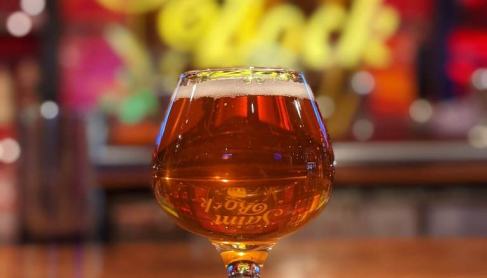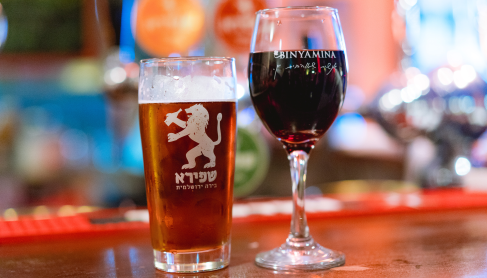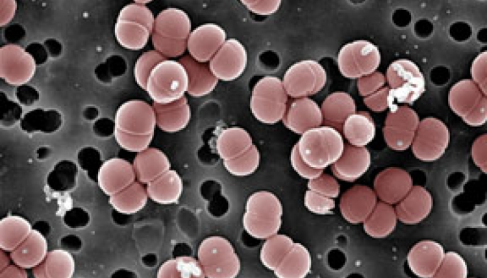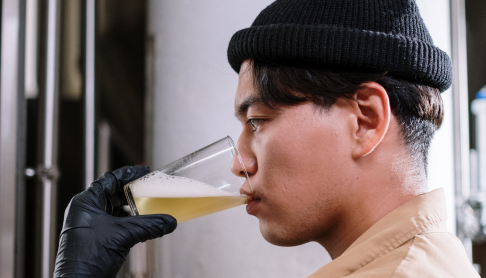Vienna Lager in Mexico: history, geopolitics and revolution
May 27th, 2023
At a time when the Vienna Lager has all but disappeared from the planet, one country stands out as an exception: Mexico. To answer this question, we need to delve into the history of European brewing, the second Mexican empire, France’s ambitions for greatness and the heroic power of nostalgia.
A Malt Story
With its amber or copper colour and medium to light texture, Vienna Lager is particularly easy to drink. Its aromas mainly reflect malt, with lightly toasted notes that are not in the caramel aroma spectrum, and may present a certain presence of noble, spicy and floral hops.
Vienna Lager is mainly characterised by its malt aroma and slight sweetness. The traditional Vienna Lager recipe uses only malt from Vienna, giving it a caramel and bread flavour. Current Vienna Lager recipes probably contain Munich malt, Pilsner malt, Vienna malt and dextrin malt, or even wheat. The hops used are German noble hops and the yeast is a lager-type yeast. A Vienna Lager from Saint-Bock in Montreal. VIenna Lager is a rarity in Quebec, as it is everywhere else!
Vienna Lager ranges in colour from pale to medium amber, with a reddish tinge and a thick, off-white foam with excellent retention. The ABV of Vienna Lager is between 4.5 and 5.5% and the IBU between 18 and 30. The best glass to serve this beer is a flute-shaped glass and the best food pairings for Vienna Lager are grilled meats and vegetables such as sausages, spicy chicken wings, game and fish and chips. According to the Brew Your Own guide, a good example of the style should be well attenuated with enough hop bitterness to have a balanced but moderately crisp finish.
The story of Vienna Lager begins in 1841, when it was introduced to the market by Anton Dreher, owner of the Schwechat brewery near Vienna. This was only a year before the advent of pilsner, the first clear lager popularised in Europe. Vienna Lager, named after the city where it was created, introduced most of Europe to modern bottom-fermented beer, before being supplanted by pilsner. It should be noted that none of these beers is strictly speaking an invention. Rather, they are a synthesis of English malting and German know-how.
This is largely thanks to Anton Dreher and Gabriel Sedlmayr, two great names in modern brewing, who together made a research trip to England and brought back to the continent the achievements of the time: English pale malt (which accentuates clarity) and saccharomyces (which measure fermentable sugar). It was on their return that the idea mill was set in motion and the beers that would go down in history were born.
The Emperor, the people and the revolution
Its history is well known. Emperor Maximilian 1st, an Austrian nobleman brought to Mexico by the French, is said to have introduced Vienna Lager to Mexico so that he could drink his native beer in his new homeland. He is said to have ordered the construction of a brewery to brew Viennese beers. The brewery was built in Orizaba, Veracruz, and was known as “La Constancia”. As a result, Vienna Lager was quickly adopted throughout Mexico, which explains the current popularity of this style of beer.
However, if you take a closer look at history, this version doesn’t hold water. Maximilian’s reign did not last long enough for him to realise his brewery project. The poor Habsburg was shot dead by Benito Juarez’s revolutionary forces three years after his arrival in Mexico. Although the order to build a brewery in Veracruz was probably given, there is no concrete evidence that the beer was ever produced on a large scale, let alone enjoyed.
The “La Constancia” brewery was probably completed in 1865 and began producing beers for the Mexican elite, but it is doubtful that this beer was comparable to Vienna Lager or that it was very popular. On the contrary, this European beer, the embodiment of foreign occupation, would probably have been shunned by the masses. The emperor, although a liberal, had clumsily angered the country’s revolutionary and monarchist forces by supporting a policy of land reform and the end of slavery.
The first traces of lager beer being brewed in Mexico date back to 1880, 13 years after the death of Maximilian I. Furthermore, the mention of a Viennese Lager in Mexico in 1865 does not correspond to the adoption of refrigeration, which arrived in Mexico long after the Emperor’s tragic end. Given the high temperatures in Mexico, producing Lager on a large scale would have been a truly monstrous challenge.
This is where we come in: the Vienna Lager explosion in Mexico. At the end of the 19th century, Mexico was undergoing a period of unprecedented economic development and industrialisation. Huge brewing industries were already being set up, all under the omnipresent influence of American technology and finance. Against this backdrop, it’s not surprising that Victoria de Modelo, along with other Mexican Viennese Lagers, was presented to the middle class as the Mexican alternative to foreign beer.
The first Viennese-style beer would probably be Victoria, produced by the Compañía Cervecera Toluca for the first time in 1875. It wasn’t until 1882, thanks to cooling technology, that it became one of the first Mexican lagers. The Victoria brewery, established in 1906, is the main producer of this Mexican classic.
Even back then, the brewery offered a range of well-known European styles, with a Mexican twist: Bock Bier Toluca, Märzen Bock, Lager Bier Toluca, Toluca Extra, Pilsner and Victoria. Gradually, Vienna Lager established itself as a beer brand in Mexico, both as a mark of authenticity and history and as a luxury brand for the middle class.
In the 1970s, international beer expert Michael Jackson said that Negra Modelo was the proudest representation of the original Vienna Lager. Today, Grupo Modelo, which absorbed Tuloca, is owned by global brewing giant Anheuser-Busch InBev.
For brewers inspired by this article, try this recipe
By: Pierre-Oliver Bussières
Sources:
- Craft Beer Club. (s.d.). Vienna Lager. https://craftbeerclub.com/beer-style/vienna-lager
- Laviña, A. (2018). Vienna Lager: The Beer of Vienna. Alcohol Professor. https://www.alcoholprofessor.com/blog-posts/vienna-lager
- Brewers Union Local 180. (s.d.). Vienna Lager. https://www.brewersunion.com/vienna-lager/
- Tonsmeire, M. (2016). Vienna Lager: Fire in the Glass. Beer and Brewing Magazine. https://beerandbrewing.com/vienna-lager-fire-in-the-glass/
- Philips, B. (2020). The Humble, Historic Vienna Lager. San Diego Beer News. https://www.sandiegobeer.news/blog/beerhistory/thehumblehistoricviennalager
- Beer Judge Certification Program. (2015). Amber Bitter European Beer. https://dev.bjcp.org/docs/2015_Guidelines_Style_8C.pdf
- Brew Your Own. (s.d.). Vienna Lager. https://byo.com/article/vienna-lager-in-exile/
- García, J. (2019). De Austria para México. Mural. https://www.mural.com.mx/de-austria-para-mexico/ar2235027







